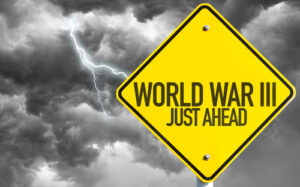Understanding the Economic and Political Implications of the Ukraine Conflict
A Push for Clarity in a Complex Situation
As the situation in Ukraine continues to evolve, various narratives emerge, many of which require deeper examination. Recent discussions highlight a critical turning point that was predicted back in May 2023, indicating a significant escalation in hostilities, especially as the West navigates its relationship with Russia.
At Extreme Investor Network, we believe it’s essential to dissect these events not just from a surface level, but through a comprehensive economic lens.
Analyzing the Role of Political Figures
One intriguing question arises regarding former President Donald Trump’s current stance on the Ukraine war. In a recent commentary, it was suggested that Trump may be misinterpreting the dynamics at play. The assertion that European powers are ostensibly orchestrating the conflict brings to light the influence of NATO and Western allies in the region.
Historically, the tensions between Ukraine and Russia can be traced back to geopolitical maneuvers, notably the role played by figures like Victoria Nuland, a key architect in the 2014 political upheaval in Ukraine. Her involvement raises eyebrows regarding the legitimacy of the claims that the conflict is entirely "unprovoked." As we examine this further, it’s vital to question: is Trump, or any leader for that matter, fully informed about the intricate chess game being played?
The Roots of Conflict: Who’s Really Provoking War?
The narrative surrounding the Ukraine conflict often casts Vladimir Putin as the sole aggressor. However, our analysis of the historical context reveals a much more complex scenario. The installation of unelected leaders, such as Oleksandr Turchynov in 2014, signals an ongoing strategy by NATO and allied forces to influence Ukraine’s military actions against Russia.
On one hand, you have ethnic Russians in regions like Donbas who seek autonomy; on the other, a significant military presence from NATO that fuels the fire rather than extinguishing it. The result? A conflict deeply steeped in historical grievances, manipulation, and power dynamics.
The International War Cycle: What the Data Says
At Extreme Investor Network, we dive into data-driven forecasts to provide our readers with insights that are both timely and actionable. A notable forecast indicates a peak in international conflict around 2026-2027, aligning with other market variables and indicating that geopolitical tensions, especially in Ukraine, may escalate further.
This anticipatory framework allows us to offer a forward-looking perspective. What does such an escalation mean for markets, commodities, and currencies? Historically, gold and silver have shown sensitivity to geopolitical strife. Any new waves of conflict may serve as precursors to significant price fluctuations in these assets.
The Importance of Vigilance: Discerning the Narrative
Amidst the clamor of media narratives labeling Putin as a dictator, it’s crucial to approach the situation with discernment. Understanding the motivations and allegiances at play can better inform our investment strategies. Those who question mainstream narratives and seek alternative viewpoints will find themselves better equipped to navigate these volatile times.
Take the recent debates surrounding the Ukraine war—are they simply propaganda designed to manipulate public perception? Or do they reflect genuine concerns over national security and economic stability? The truth lies somewhere in the middle, as we sift through facts and interpretations.
A Call for Insightful Engagement with Market Trends
Our readers often engage with us through insightful questions, and we value this discourse. One recurring theme involves the implications of the upcoming peak in the war cycle for asset prices, particularly gold and silver. As various models converge around late 2026, it’s apparent that we must prepare for heightened volatility in financial markets.
The connection between geopolitical events and market mechanics cannot be overstated. Understanding this intersection can unlock significant opportunities for astute investors.
Preparing for Tomorrow: The Next Financial Capital?
Beyond the immediate geopolitical landscape, we are also focused on long-term implications in the global financial ecosystem. As forecasts suggest, we are on the brink of a historical shift that will see China rise as the new financial capital around 2032. This may not only redefine global trade but could also change investment strategies significantly.
As we continue to follow these developments at Extreme Investor Network, our commitment is to provide you with a nuanced understanding that transcends conventional narratives. With each insight, we aim to empower you—our readers—to make informed investment decisions that align with your long-term goals.
Conclusion: The Need for Critical Analysis
In conclusion, the Ukraine war is not merely a regional conflict; it’s a significant piece of a larger puzzle that influences the global economy. By maintaining a robust understanding of political narratives, economic cycles, and market trends, you position yourself not just as an observer, but as an active participant in navigating these turbulent times.
Stay engaged with us at Extreme Investor Network for ongoing insights designed to help you make sense of a complex world.

